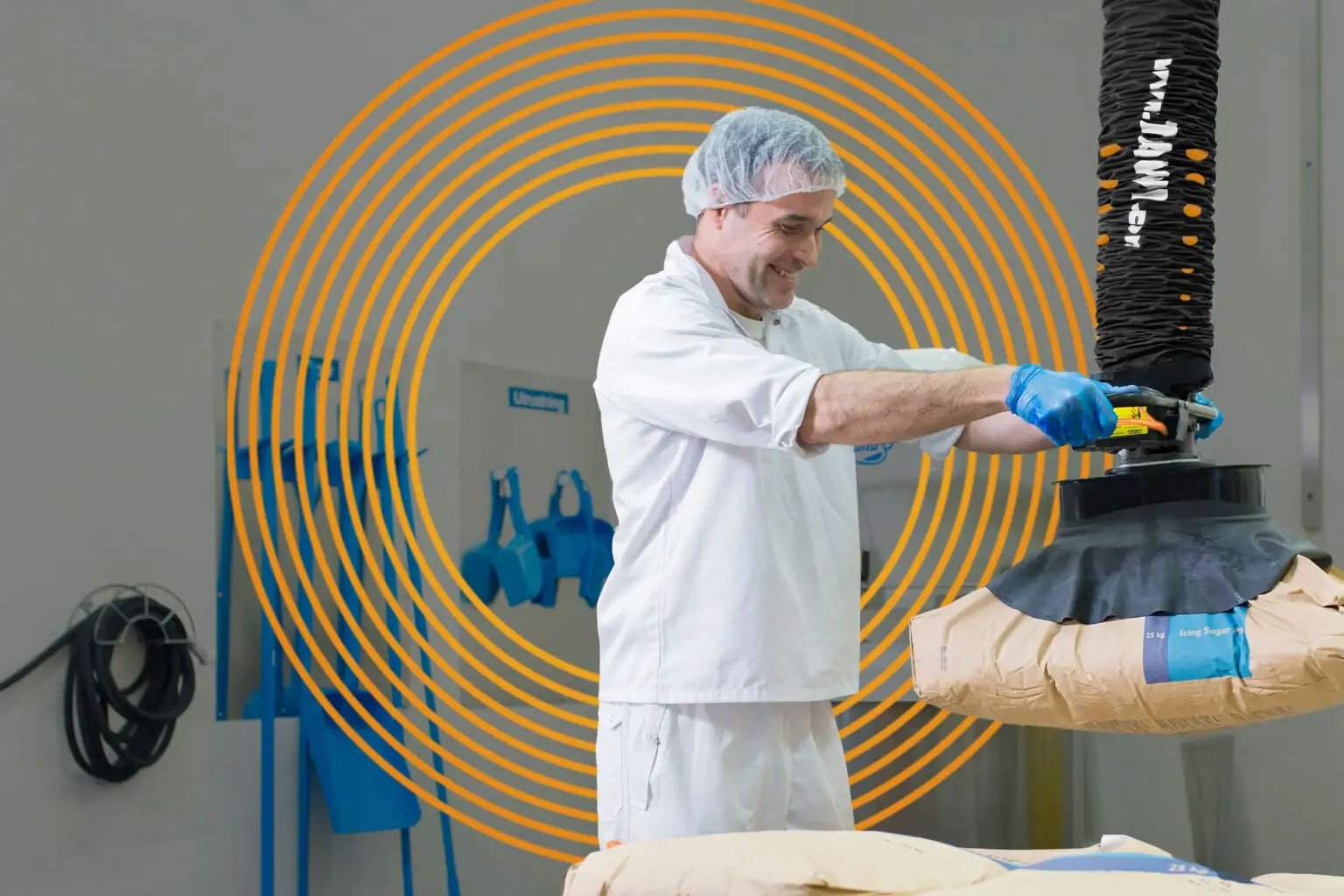
Modernising your F&B Business
A Plant Manager's Recipe for Efficiency in Food Manufacturing Equipment
Speak with an ExpertIn the world of food and beverage production, efficiency plays a crucial role. As a plant manager, there’s a lot of pressure on you to keep production up and running.
But how do you navigate the ever-evolving landscape of Food & Beverage production? How can you stay ahead of the curve, boost productivity, and ensure safety while spinning many plates?
Enter smart lifting solutions—a technology that’s reshaping the industry. In this comprehensive ebook, we’ll delve into the art and science of modernisation.
Whether you run a hyper-optimised facility reliant on speed and efficiency to justify your tight margins or you’re looking to make a leap and substantially boost the efficiency of your plant production… vacuum lifting, lifting trolleys and the wider range of smart lifting solutions have the ability to revolutionise the food & beverage industry and in this document, we’ll identify key modernisation considerations for your business.
What you'll discover
- The Urgency of Modernisation: There’s a pressing need for change. From outdated processes to rising consumer expectations, we explore why food & beverage facilities must adapt or risk falling behind.
- Consumer Trends and Your Facility: The F&B landscape is shifting—fast. Learn how changing consumer habits impact your operations and how smart lifting solutions align with these seismic shifts.
- Modern material handling techniques and the important role that it plays maintaining operational efficiency.
- The Future of Lifting Technology: Buckle up for a glimpse into tomorrow and what the next stage of innovation and evolution is set to focus on.
- Economics and Ecology: Sustainability meets savings. We explore the economic impact of vacuum lifters and other smart lifting solutions in F&B, emphasising cost-effectiveness and environmental stewardship.
- Safety First: Ergonomics matters – Ergonomics takes centre stage as modernisation that doesn’t improve on worker safety and quality of life is a wasted opportunity.
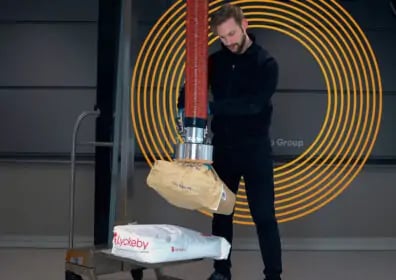
The Need for Modernising Your Food Manufacturing Equipment
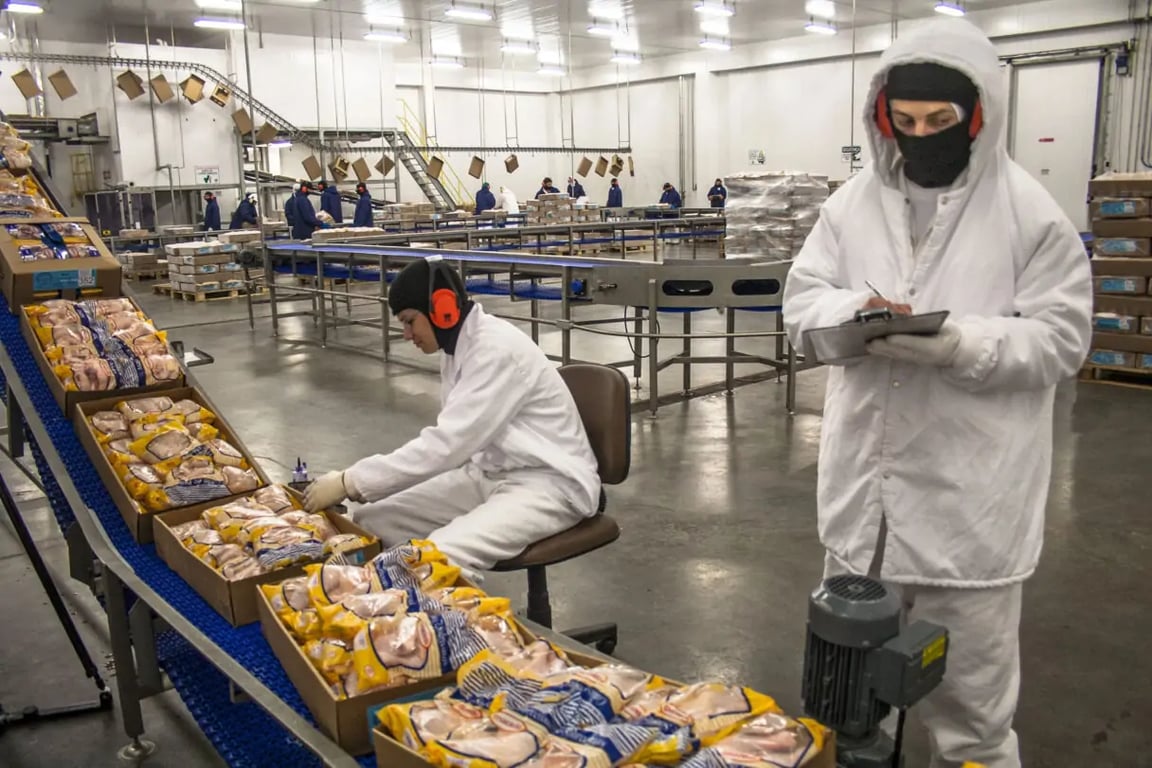
Unlocking Efficiency in Food & Beverage Facilities
In the heart of bustling food and beverage (F&B) facilities, a silent revolution is underway. Plant managers, like you, grapple with a relentless pace—where every production line hums, every ingredient matters, and every decision reverberates through the supply chain. But amidst this orchestrated chaos, there’s a critical question: Is your facility ready for the future?
The Current State of F&B Facilities
Speaking to industry experts and the food and beverage-focused team here at TAWI, we’ve found that the start of F&B facilities seems to be split into two distinct categories.
On the one hand, there are the hyper-optimised facilities. Spending hundreds of thousands on specialised technology to find marginal gains in their operations. These businesses succeed by perpetually refining their processes and improving their technology. They have competitors raring to take some of their own market share, so efficiency has a direct effect on the price the end consumer pays. Improve the production process, keep your prices competitive and improve your own margin.
On the other hand, slightly less competitive produce and facilities. Historically successful in finding their own niches and continuing to produce a solid product. They improve processes and their facilities, but often more so in eras or paradigms. New management can shake up how the business operates and look to bring in new ways of doing things. More often than not though, they rely on tried and tested (but often inefficient) technologies. Picture this: conveyor belts laden with fresh produce, automated bottling lines, and workers deftly manoeuvring heavy containers. Yet, beneath this surface lies a paradox. Many F&B facilities operate with legacy systems, outdated machinery, and manual processes. These inefficiencies ripple across the entire ecosystem:
Downtime – The impact of legacy technology often means downtime. Older, less reliable machinery can cause frequent breakdowns that disrupt production schedules, leading to lost revenue and frustrated customers. Downtime is frequently considered an argument for procuring new technology as food plants are often scared of losing productivity during the switch but at a certain point, increased maintenance becomes a bigger burden than installation woes.
Labour concerns – Manual labour vacancies are becoming more and more difficult to fill. Whether it’s the growing trend for new workers to avoid intensive jobs or the loss of skilled workers to injury, labour in this sector is a concern.
Space Constraints – Like many other industries, the food and beverage space seeks to do more with less. This routinely means finding ways to be more efficient without increasing floor space. Expanding production lines within cramped spaces feels like fitting a square peg into a round hole.
The Imperative of Modernisation
Why modernise? Put simply, it’s the need to address the increasingly loud concerns echoed in the earlier section. The F&B sector needs:
- Competitive Edge: In a global marketplace, agility wins. Modern facilities adapt swiftly to changing consumer demands, seasonal variations, and market dynamics.
- Cost Efficiency: Efficient material handling reduces waste, optimises storage, and streamlines processes. Every saved minute translates to cost savings.
- Quality Assurance: From farm to fork, precision matters. Modernisation ensures consistent quality, traceability, and compliance with stringent regulations.
- Sustainability: The planet demands it. Energy-efficient food manufacturing equipment, reduced emissions, and eco-friendly practices resonate with conscious consumers.
Is Technology the Catalyst for Change?
The F&B Industry is no stranger to implementing major technological and automated solutions across the board. Process managers in these businesses often design and build highly technical facilities specifically around one or two bespoke pieces of technology. All in the pursuit of more efficient food production.
This is especially true of larger conglomerates, but smaller facilities are still often highly automated. Efficiency is the key in an industry with such low margins and so much jeopardy if something goes wrong.
Despite such an eye for highly specialised and automated machinery, there remains an overlooked gap and this is typically true of both smaller and multinational organisations. This gap tends to be at the start and end of the process. The manual handling of bulk raw materials and then that of the final processed and packaged output.
These heavy and often cumbersome sacks, boxes, barrels, tins etc can cause long-term issues to workers who repeatedly handle them, but crucially there are proven tools that could improve efficiency in the plant.
Is technology once again the answer to finding these coveted efficiencies?
We think yes. Smart lifting technologies certainly have a part to play in the modernisation of the industry, but we would argue that they are not the sole area of concern. New technology brings opportunities to develop new processes that are just as crucial to your modernisation roadmap, but it also introduces challenges that need to be addressed.
For example, if you procure technology that addresses staffing issues and staffing health, how do you then repurpose your team to ensure they still provide support to your operation?
Technology is quite rightly considered a catalyst for change and for modernisation but it has to be considered as just one part of a bigger project.
In the subsequent sections, we’ll delve deeper into the challenges faced by F&B facilities, explore smart food manufacturing equipment and it’s role in overcoming them, and chart a course towards a more efficient future.
[ Back to top ]
Adapting to Consumer Habits
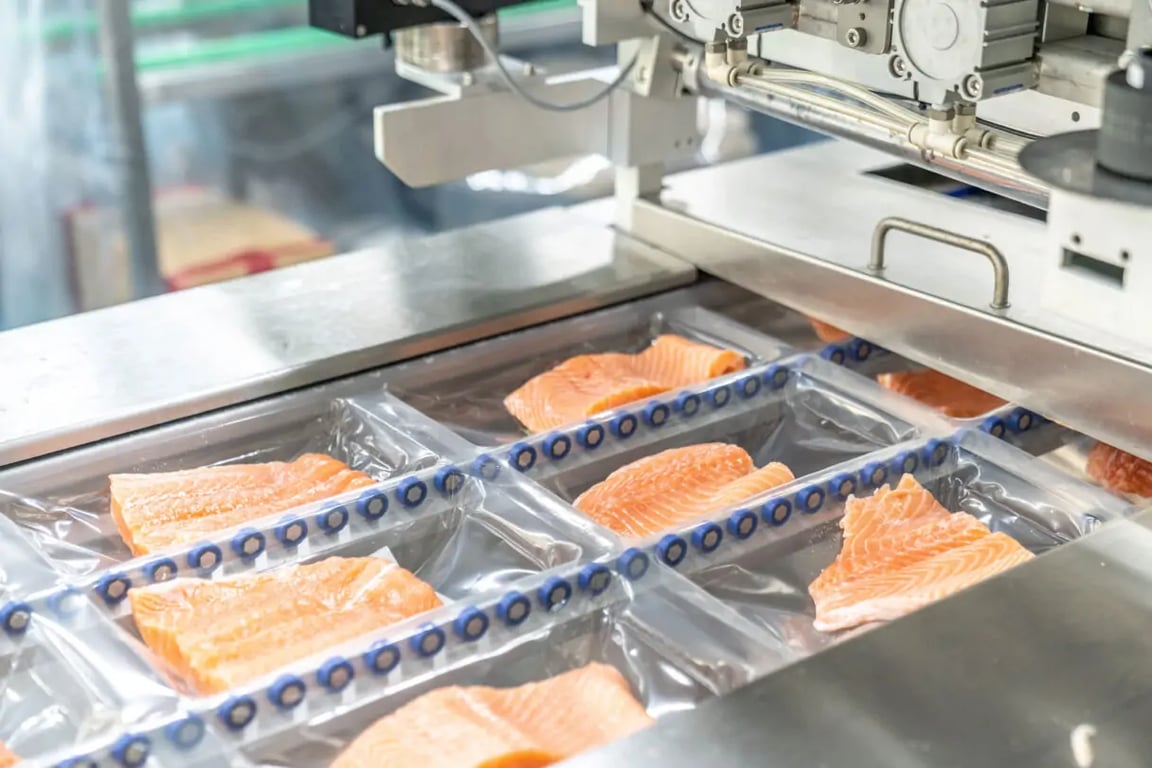
Why modernisation in the F&B space is on the menu
Alongside the push for businesses to improve their shareholder profits and squeeze more efficiency from their operations, consumer habits are playing an increasingly large role in dictating the need for modernisation. Consumer habits are no longer mere trends—they’re seismic shifts that shape the industry.
Sustainability
Consumers today wield their purchasing power with a conscience. They seek products that align with their values—products that tread lightly on the planet. Sustainability is a non-negotiable imperative. From farm-fresh produce to packaged goods, F&B facilities must adapt.
- Packaging Predicament – Plastic waste haunts our oceans. Consumers demand eco-friendly alternatives. Modern lifting solutions play a pivotal role here. This concern is often made even more difficult by the need to reduce the weight of packaging and shipping to reduce the greenhouse impact of the produce you acquire and the products you then ship. The solution for this regularly returns back to plastics or bio-plastics as more can be packaged into fewer shipments. This leads to food plants often requiring changes in their lifting processes and technologies. When looking for technology solutions to support these packaging aims, it’s vital you look for solutions which can handle the breadth of different materials used in packaging. It’s also important to consider flexibility for potential future technologies. Packaging is likely to remain ever-changing and innovating as businesses look to further cement their green credentials. Vacuum lifters, for example, can handle delicate glass containers or reusable packaging materials with care, reducing the need for excessive packaging. Lifting trolleys too, play an important role in the packaging process. They make light work of handling reels of plastic film required for packaging machines.
Health-Conscious Choices
Health-conscious consumers have been growing in buying power over the last few decades, what was once considered a trend or ‘the diet industry’, has now well and truly transcended this. Consumers scrutinise labels, seeking products that nourish without compromise.
Where this now pushes the food and beverage industry to act is around speed and output. Healthy foods often include produce that is known to spoil quite rapidly (i.e. fruit and veg). Additionally, there’s often a delicateness to this produce fruit can bruise easily if mishandled.
The need to maintain produce freshness in this industry, coupled with a requirement for the delicate handling of produce, all the while improving efficiency and productivity in your plant. This is leading businesses to seek technological and specific solutions to resolve this. Improving conveyor technologies and lifting equipment is a good way to start hastening the output of fresher produce.
Flexibility: The Modern Lifter Advantage
While TAWI is pretty confidently claiming that the healthy food movement is basically the new normal, that doesn’t mean that consumer preferences don’t change. Consumer preferences fluctuate like tides. Today’s trend may be tomorrow’s nostalgia. F&B plants need agility to adapt to these changes.
As mentioned previously, futureproofing your tech acquisitions and new process to be ready for these changes is crucial:
- Quick Changeovers: Using smart lifting solutions allows plants to adapt swiftly. From loading bulk ingredients to switching to delicate pastries, they reduce changeover times. The production line dances to the rhythm of consumer demand.
- Customised Batches: Consumers seek personalisation. Vacuum lifters & lifting trolleys can help you handle diverse loads—whether it’s a small batch of artisanal cheeses or a large order of gluten-free bread. Flexibility fosters customisation.
Enhancing Efficiency in Food & Beverage Material Handling
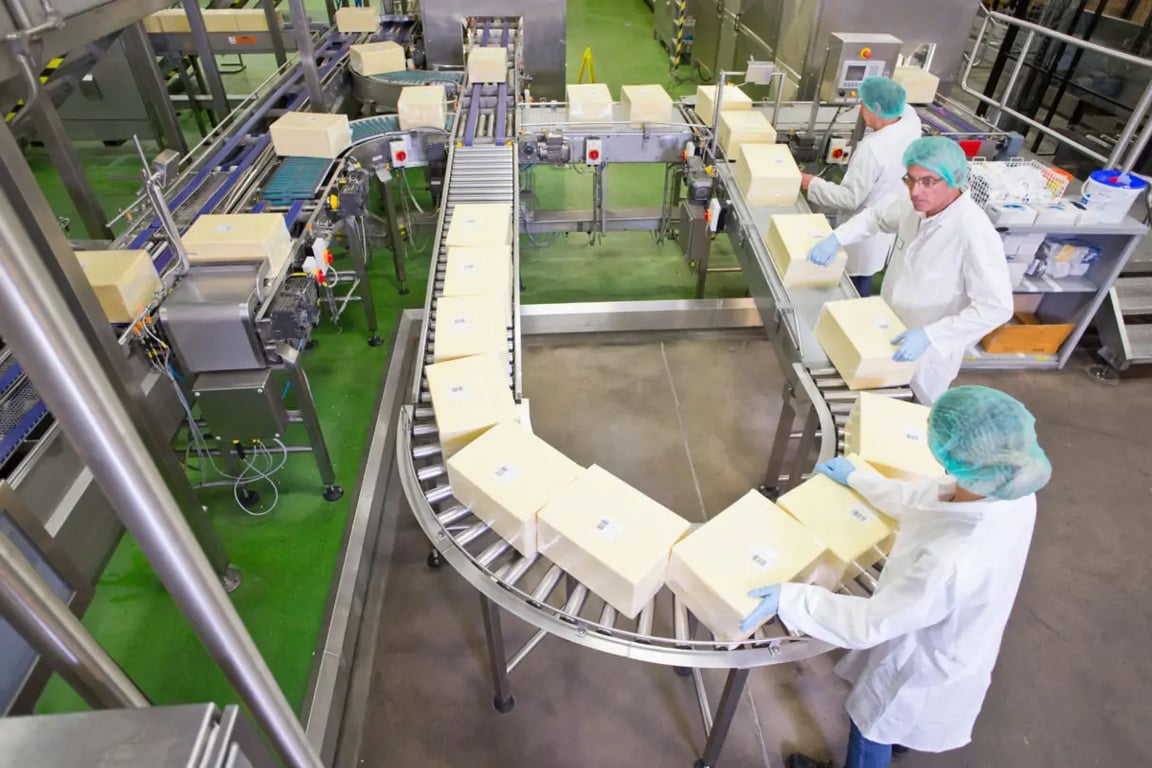
In the intricate choreography of food and beverage (F&B) production, material handling takes a central role. We explore this idea a little deeper in our thought-provoking piece titled “Stop Kicking the Can Down the Road: Why Material Handling in F&B Is So Important.”
Material handling isn’t glamorous—it doesn’t grace magazine covers or trend on social media. Yet, it’s the silent efficiency driver that underpins every operation within F&B facilities. Getting your approach to it right now (and prepared for future changes) could amount to one of the biggest improvements to your plant’s operations.
Consider these data-driven insights:
Downtime Reduction: Efficient material handling slashes downtime. When ingredients flow seamlessly from storage to production, the clock ticks in your favour. Imagine a 10% reduction in downtime—what would that mean for your facility’s productivity?
Productivity Amplification: Every minute saved in material handling cascades across the entire process. Multiply those minutes by shifts, days, and months. The impact is exponential. A well-handled crate of fresh produce isn’t just a crate—it’s a productivity catalyst.
Let’s crunch the numbers:
- Labour Efficiency: Imagine a manual lifting process that consumes an average of 5 minutes per load. Lifting multiple containers and boxes in one go rather than one by one. Multiply that by the number of loads per day, and you’ll see the hidden cost.
- Error Reduction: Material handling errors—misplaced crates, damaged goods—ripple through the supply chain. The cost of rectifying errors, lost inventory, and customer dissatisfaction adds up. Precision handling minimises these costly blunders.
- Throughput Acceleration: A bottleneck at the loading dock reverberates across production lines. Efficient material handling ensures a steady flow. Imagine a 20% increase in throughput—more products, more revenue.
- TAWI’s suite of lifting solutions for the food and beverage industry is an area where we can confidently say, you’ll see an impressive improvement in current manual material handling processes. Not only do TAWI’s solutions demonstrably improve throughput, but the knock-on effect of a fresher, less burnt-out workforce means that productivity remains consistent up until 5 o’clock.
Working smarter helps:
- Workflow Bottlenecks: Are there choke points where materials pile up, waiting for attention?
- Labour Fatigue: Do workers strain to lift, shift, and stack? Fatigue erodes efficiency.
- Space Utilisation: Is your floor space optimised? Efficient material handling maximises every square metre.
- Material handling technology can have a substantial impact on how your business operates. Vacuum lifters, lifting trolleys and jib cranes aren’t just tools—they’re strategic allies.
- In the subsequent sections, we’ll explore how smart lifting technology aligns with these consumer-driven shifts. From sustainability to health-consciousness, modern food manufacturing equipment like smart lifting solutions should be strategic partners in your F&B plant’s evolution.
- For deeper insights, check out our blog post on material handling.
Pioneering the Future of Material Handling with Modern Food Manufacturing Equipment
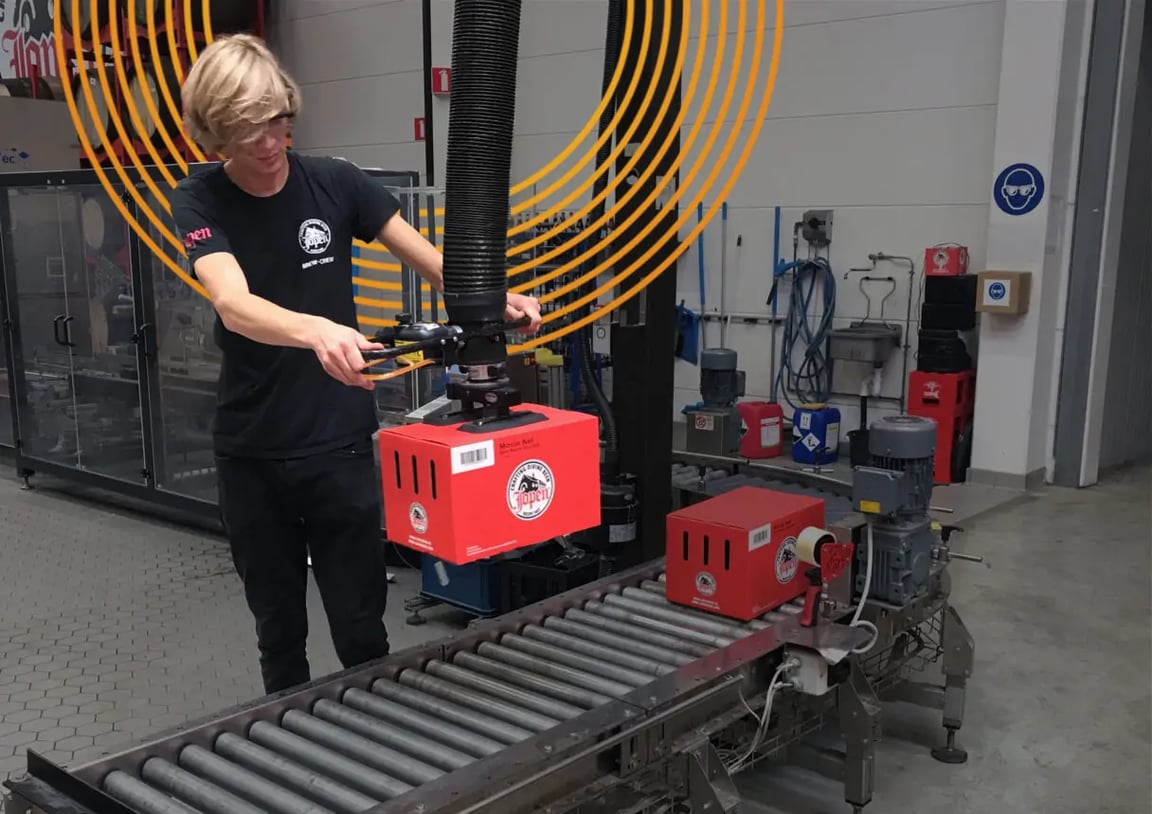
As we’ve hinted at throughout the course of this article, we are pretty firm believers in using technology to help modernise this industry. Using semi-automated technologies and creating synergies with machines to leverage more output from your facilities.
The Rise of Vacuum Lifting Technology
Vacuum lifters have transcended traditional lifting mechanisms. They defy gravity, revolutionising efficiency, safety, and adaptability. The technology can provide a real uplift in team morale as weights become basically non-existent.
Let’s delve deeper into the new technologies launching in the F&B industry:
- Smart Sensors – These intelligent sensors adjust suction strength dynamically based on load weight and surface texture. Whether lifting delicate pastries or hefty crates, precision is paramount. Imagine a vacuum lifter that senses the fragility of a glass bottle and adjusts its grip accordingly.
- Adaptive Grippers – Picture a lifter that moulds itself to the contours of a cheese wheel or a stack of irregularly shaped produce. Adaptive grippers do just that, ensuring secure handling without damage. They adapt to the unique geometry of each load, reducing the risk of accidents.
In the future, it’s expected that connectivity will improve further through integration with the Internet of Things (IoT) making operations in food plants even more seamless.
These advancements translate into demonstrable improvements to your facility, operations and workforce
Speed improvement – The latest lifting solutions can help your teams transition from raw ingredients to final packaged products more rapidly. Making light work of kegs and barrels in the drinks industry which once would have been difficult to carry solo.
Safety – Ergonomic designs protect workers. No more strained backs or workplace injuries. Safety isn’t an afterthought—it’s woven into every lift. Imagine a lifter that not only lifts efficiently but also prioritises the well-being of your team.
The serious care given to your workers’ health and well-being is a welcome change to previous years and is something which has to transcend fads. With individuals becoming more aware of their work’s impact on their own lives outside of work, maintaining flexibility, agility, strength and health during work hours is a cemented concern in workers of today.
Space Maximisation – Choosing the right suite of modern lifting solutions can help you make the most of your current floor space. Working closely with your technology partner, lifting solutions can be built to fit into tight corners. Cramped facilities breathe easier as floor space is optimised. Imagine reclaiming valuable square footage in your production area, allowing for better flow and organisation.
The future of lifting technology in the food and beverage sector is hugely promising. The next stage of innovation and evolution is set to focus on:
- Collaborative Robots (Cobots)
The future involves cobots—robots that collaborate with humans. Vacuum lifters will work alongside skilled workers, enhancing productivity. Imagine a lifter that assists your team, making their tasks easier and more efficient. - AI-Driven Lifting
Imagine lifters that learn from their environment. AI algorithms adapt suction patterns, predict maintenance needs, and optimise energy usage. These intelligent lifters become smarter over time, enhancing efficiency and reliability. - Eco-Conscious Materials
Sustainable materials for vacuum pads and grippers. The planet demands it, and F&B facilities will lead the charge. Imagine lifters made from recycled materials, contributing to a greener industry.
TAWI’s research and development team remains at the forefront of the lifting technology and constantly pushes the industry forward.
[ Back to top ]
The Economic Implications of Failing to Modernise Your Food Manufacturing Equipment
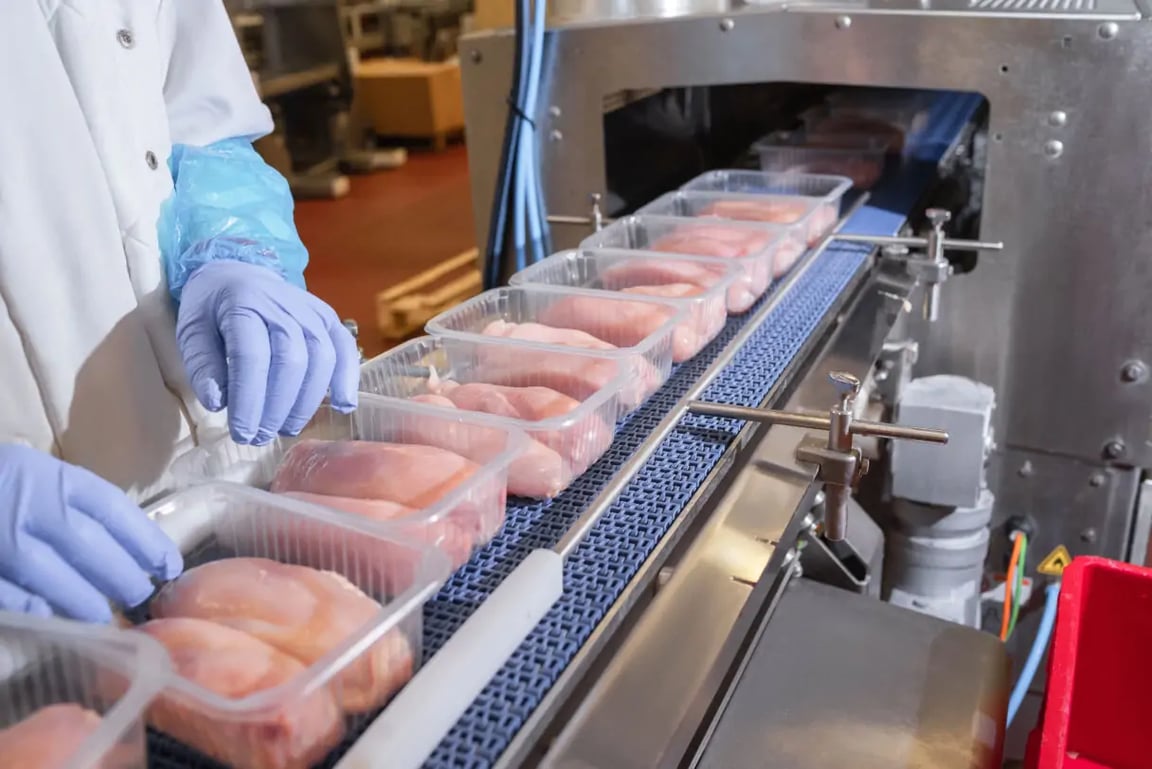
Economic Fallout
As previously discussed, the industry isn’t shy of technology and modernisation but from what our F&B experts have observed, there remains the overlooked gap around manual handling. What makes this most surprising is that a lot of the vacuum lifting technology was designed with the food & beverage in mind, as organisations sought to find a solution for handling large sacks of produce.
If your organisation doesn’t seek these competitive advantages and marginal gains, then your competitors will. Especially in such a fast-paced, quantity-led industry.
We’ve mentioned previously already but downtime costs your business
Outdated machinery and manual processes are statistically more likely to lead to downtime than newer technologies. Each minute of downtime translates to lost revenue. Imagine a production line halted due to a malfunctioning conveyor belt or an inefficient material handling system. The financial toll accumulates rapidly.
“We use simple and reliable machines, downtime and maintenance are less of a concern for us.”
It’s certainly true that certain legacy systems can operate more smoothly due to their simplicity but with simplicity, you’re often operating at suboptimal efficiency.
Whether it’s inefficient energy consumption, slow production cycles, or excessive labour costs, the financial impact is tangible. Imagine a facility where every process—from ingredient handling to packaging—lags behind industry standards.
“Well it’s just the way we do it”
Similarly to technology, older processes are probably in need of review. Marginal gains in such a high-paced industry can often make all the difference between success and failure. Reassessing your “if it’s not broken, don’t fix it” approach can help you find those marginal improvements.
Missed Market Opportunities
Beyond internal inefficiencies, the cost of modernisation can be seen in your business’ flexibility to market and consumer demands. We’ve already outlined some of the various consumer demands which alter production but we left the main part unspoken. The inability to successfully adapt to those changing demands will impact the economic health of your business.
Modern consumers seek variety, personalisation, and sustainability. Failure to adapt means missing out on market trends. Imagine a facility unable to swiftly introduce new product variants or respond to seasonal demands. The opportunity cost is substantial.
Additionally, in an industry which is increasingly globalised. Consumers one side of the globe are more and more interested in exploring foods from the opposite side, in turn this improves the supply chain across the world. As a result of this interconnected F&B landscape, global competitors can move swiftly. You’re no longer competing with regional and national competitors, you’re competing against the world. A more modernised facility and food manufacturing equipment can more easily pivot and adapt to evade concerns.
A more regional and poorly equipped local producer suddenly becomes unable to compete with agile international giants. The economic gap widens.
…and the Environmental ones
In someways, you can’t really separate the environmental concerns from the economic ones. Whether it’s energy inefficiencies or waste or resource depletion, they’ll impact your bottom line.
But the environmental implications have another fundamental impact on the image and brand of your business. Consumers now actively search for business’ ecological impact. Not only does it make sense to review these areas to potentially save running costs, it’s crucial to do so in order to maintain income streams. The cost of not modernise your business can be seen with:
Energy-Hungry Machinery: Outdated equipment can often guzzle substantially more energy. Imagine inefficient refrigeration systems, power-hungry conveyors, and outdated lighting. The environmental toll is evident—higher emissions, increased resource depletion, and a larger carbon footprint.
Waste Generation: Inefficient processes lead to more waste. Whether it’s excess packaging materials, spoiled ingredients, or inefficient storage practices, the environment bears the brunt. Imagine a facility where food waste piles up due to inadequate handling systems.
Water Usage: Manual processes often consume more water. Imagine inefficient cleaning practices, leaky pipes, and outdated sanitation systems. The strain on local water resources is palpable.
Raw Materials: Inefficient handling leads to more raw material wastage. Imagine crates of fresh produce bruised during handling or excessive spillage during bottling. The environmental cost extends beyond the facility walls.
Modernisation is a difficult task and clearly one which shouldn’t be undertaken lightly but it’s worth weighing up:
- Investment vs. Cost – Modernisation isn’t an expense—it’s an investment. Imagine a facility that embraces automation, efficient material handling, and sustainable practices. The long-term benefits outweigh the initial costs.
- Sustainable Practices – Modernised facilities and manufacturing equipment reduce energy consumption, minimise waste, and optimise resource usage. Imagine a facility that aligns with circular economy principles, recycling materials and reducing environmental impact.
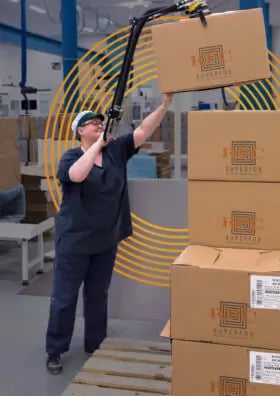
Enhancing Safety with Ergonomic Food Manufacturing Equipment
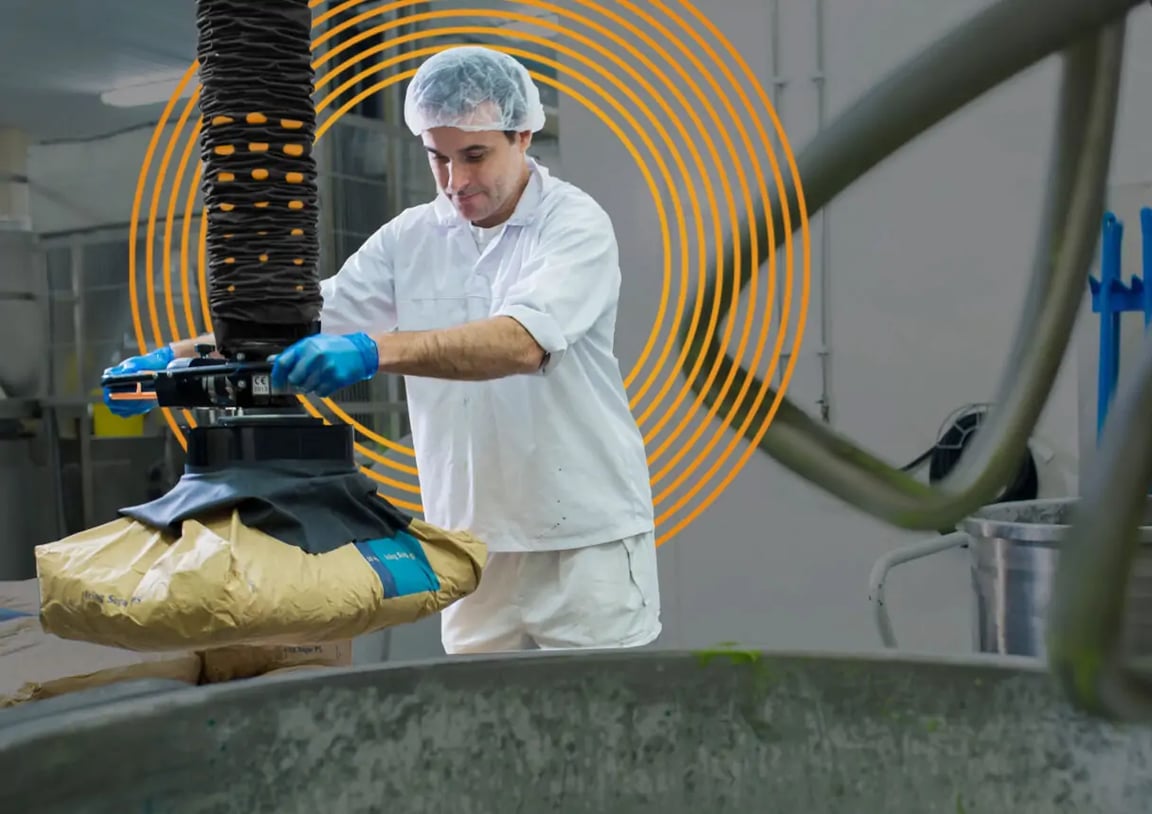
Balancing efficiency and worker well-being
Modernisation isn’t a luxury—it’s a survival strategy but at the same time, modernisation at the cost of safety is not an option. Ergonomics—the science of designing workspaces and tools to fit human capabilities—takes centre stage. Modernisation that doesn’t improve on worker safety and quality of life, as well as efficiency and productivity gains, is a wasted opportunity. Considering the improvement of working conditions as a net benefit to both your bottom line and your business brand.
In the world of manual labour and material handling, your company’s safety record can impact your ability to attract workers. Skilled manual labourers are becoming scarcer. As the pool of experienced workers shrinks and new recruits seek different career paths. Modernisation is our bridge—a way to ensure continuity without compromising well-being.
Ergonomics: A Vital Component
Ergonomics shouldn’t be an afterthought—it’s a cornerstone. Imagine a facility where every workstation, every lifting mechanism, and every process aligns with human capabilities:
Reduced Strain: Ergonomic lifting solutions eliminate heavy lifting. Workers no longer strain their backs or shoulders. Imagine a lifter that feels like an extension of your arm, promoting comfort and safety.
Customised Fit: Ergonomic designs accommodate varying heights and body types. Imagine a facility where each team member finds their optimal lifting position, reducing fatigue and injury risks.
Injury Prevention: Ergonomics minimises musculoskeletal disorders. Imagine a lifter that reduces the risk of back injuries or repetitive stress ailments.
Mental Well-being: Modernisation isn’t just about machinery—it’s about worker satisfaction. Imagine a facility where ergonomic workstations foster mental well-being, reducing stress and burnout.
Modernisation of your food manufacturing equipment isn’t a trade-off between efficiency and health—it’s a harmonious blend. Imagine a facility that integrates smart technologies, embraces circular practices, and prioritises worker welfare.
[ Back to top ]
Conclusion
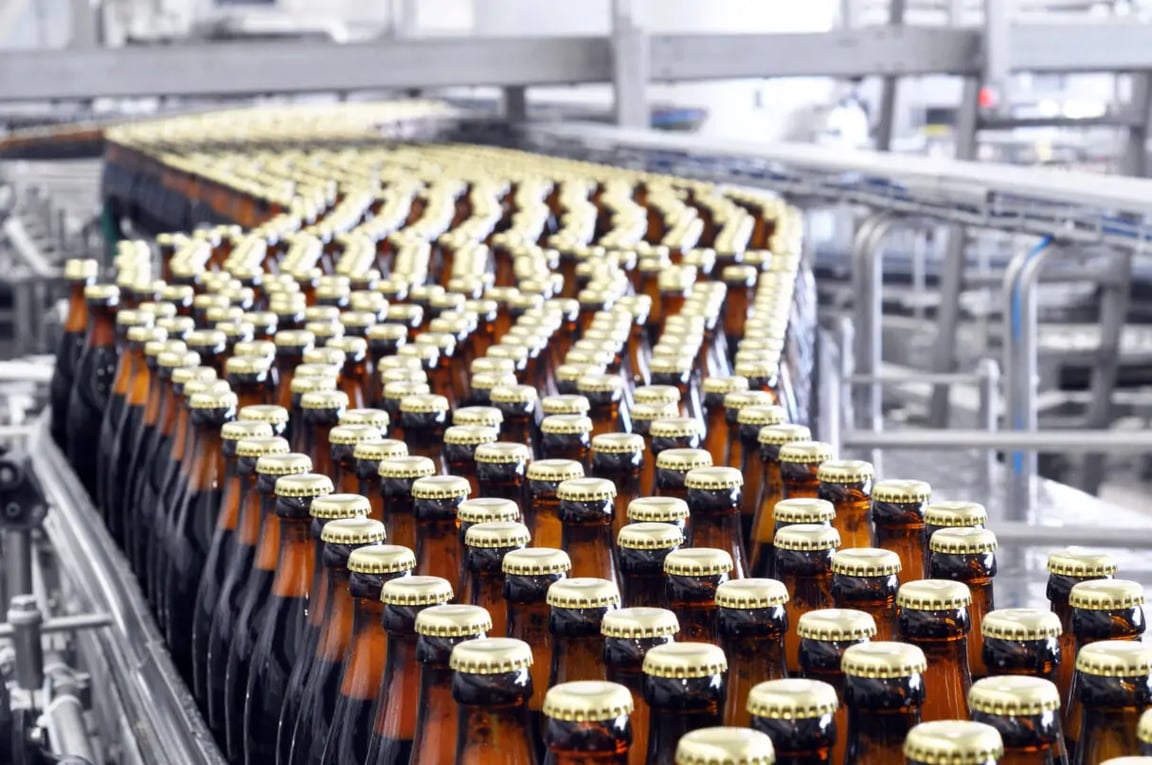
From the bustling kitchens to the loading docks, every step matters. Here are our parting thoughts:
The F&B industry thrives on agility, adaptability, and foresight, as a result, modernisation and keeping up is vital part to competition. Imagine a facility that embraces smart technologies, sustainable practices, and ergonomic designs. The future belongs to those who dare to innovate.
Ergonomics isn’t a buzzword—it’s a commitment. Imagine a workforce that lifts without strain, moves without fatigue, and thrives without injury. A happier workforce. A more loyal workforce. Safety isn’t an afterthought—it’s the heartbeat of productivity.
Modernisation isn’t just about machines—it’s about people and the processes. Imagine a facility where workers find purpose, where their well-being is prioritised. Where modern processes match modern technology. Bon appétit!
Ready to start your food and beverage plant modernisation project? Speak to one of our F&B experts today to understand how TAWI’s solutions could best complement your workforce.